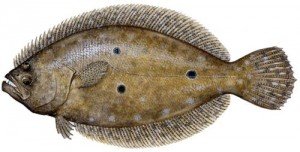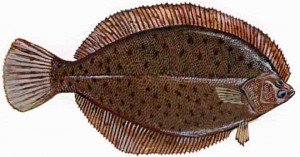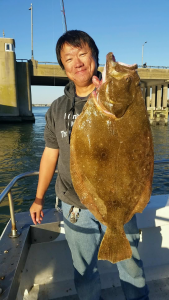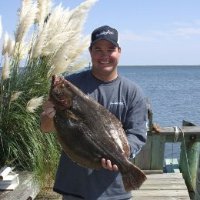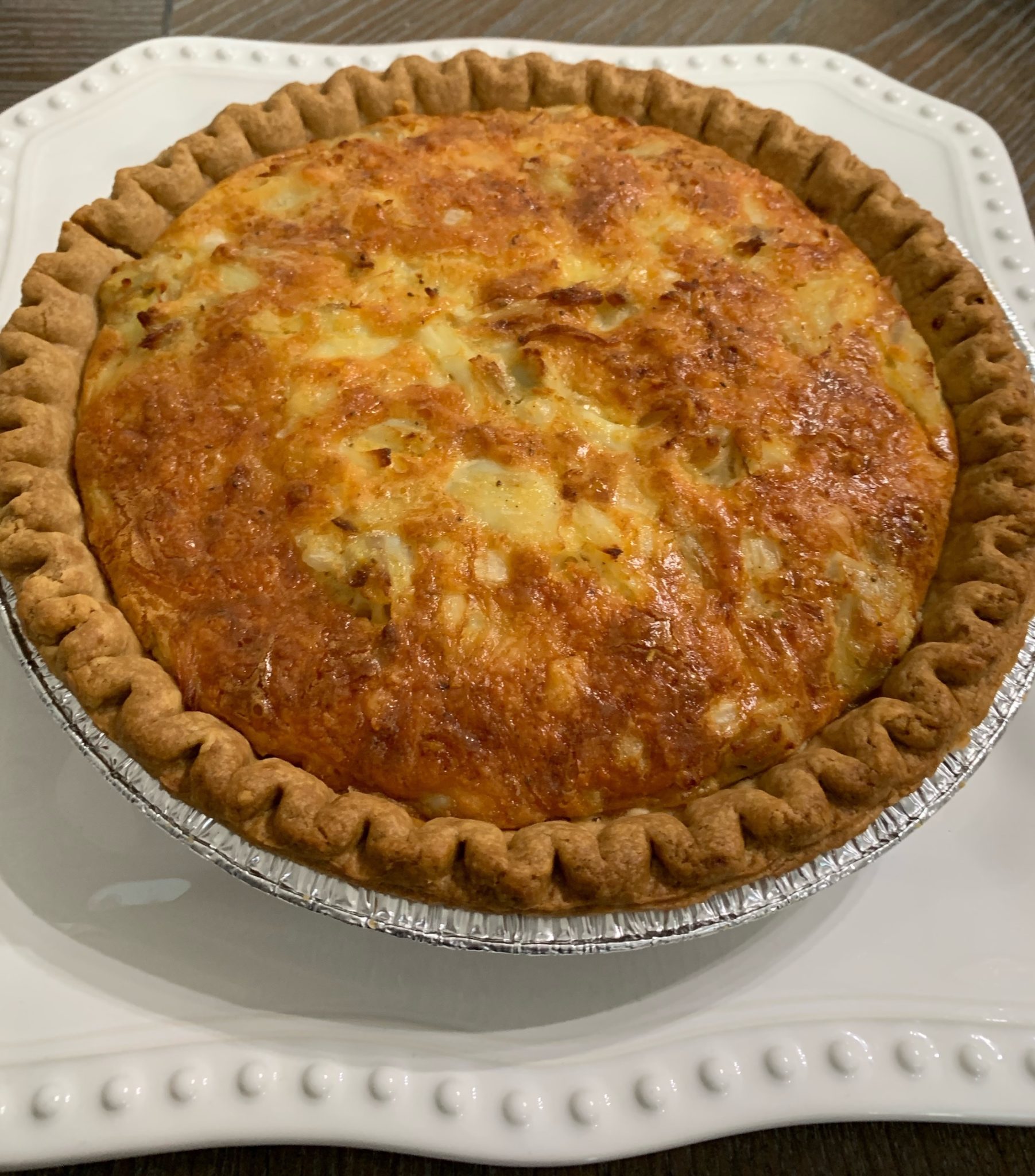
Posted on March 22nd, 2017
By far, the most sought after inshore species of fish in Ocean City, Maryland is the summer flounder. The scientific name for the summer flounder is Paralichthys dentatus, but depending on where you’re from you’ll hear them referred to as a couple of different names. As I travel the trade show circuit in Pennsylvania, New Jersey and New York during the winter months I get a lot of questions about “fluke” fishing. A lot of folks from north of the Mason Dixon line refer to summer flounder as “fluke” while they call the summer flounder’s close cousin the winter flounder a “flounder”. South of the Mason Dixon most anglers refer to summer flounder as “flounder” and winter flounder as either “winter flounder”, “blackback flounder” or “sand dab”.
Even though the summer and winter flounder are both flatfish they have major differences to tell them apart. I’m way more familiar with summer flounder than I am winter flounder. I’ve caught thousands of summer flounder in my fishing career in Ocean City, but I’ve only caught one winter flounder. The two most noticeable differences between the two fish are the facts that the summer flounder has teeth and the winter flounder does not, and the fish face in different directions. The winter flounder is a “right-eyed” flatfish and the summer flounder is a “left-eyed” flatfish. This is determined by the direction that the fish is facing while laying on it’s bottom side with the eyes above the mouth. Both fish start off with one eye on each side of the head in the larvae stage and just a few weeks into their lifecycle one eye will migrate to the other side of the head. Both eyes end up on the right side of a winter flounder and on the left side of a summer flounder.
Well that’s enough of the scientific stuff. Hopefully it’s just enough to give the impression that I know what I’m talking about so the rest of this has some credibility. While a lot of what you’ve just read comes from internet research and soaking up knowledge from old salts in Ocean City like Dale Brown, Dan Lampe, Bob Gower and Dale Timmons, all of what you’re about to read comes from experience. Fishing is my job in Ocean City, and I host a television show on it so I am lucky enough to have the opportunity to fish for every species that is targeted in Ocean City. I caught my first flounder in Ocean City when I was in high school and had no idea what this weird looking fish was…..I’ve been hooked on them ever since.

The first flounder of the season usually show up in our back bays sometime in late March or early April depending on the water temperature, and they are hungry. Water temperature in the spring is a very important factor to consider when fishing for early season “flatties”. Summer flounder are most comfortable in water temps above 50 degrees and they really start to move into our bays in good numbers when the water temps are above 60. Anglers have their best luck in shallower water in the early spring. Flounder can be found in deeper water in the 15 to 20 foot range, but most fish will be on or around sand bars and at the mouth of creeks and estuaries waiting in ambush for bait that is being carried by the tide. Ocean City’s waterways hold minnows, silversides, small crabs and grass shrimp that are staples in a flounder’s diet, and flounder that are just in from the ocean take advantage of these baits as they are schooled in shallow water.

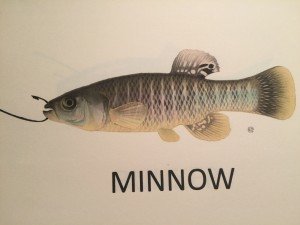



I’m definitely a live bait guy when it comes to flounder fishing. I’ll use frozen shiners in the spring, but as soon as the big minnows are readily available at the local tackle shops I use those on a regular basis. I use the same rig for both baits from early spring through mid-summer. I like a sliding sinker on the main line above a barrel swivel that holds a double hook top and bottom rig. I use two Gamakatsu 02310 size 1 Octopus hooks in red and will make several with different skirt or squid colors on the top hook (closest to the sinker), but the bottom hook always stays naked. I leave that reserved for three shiners in the spring and the biggest minnow I can find when they become available. Hook the shiners through the eyes and stack them on the curve of the hook and hook the minnow through the lips far enough back that it stays on the hook. I catch more flounder on the top hook with a squid or skirt on it, but I catch larger flounder on the bottom hook with the larger baits.


Even though I prefer live bait, I have to admit that I fish Gulp artificial baits quite a bit. I don’t think I’m convinced that the baits “work as well as live bait”, but they are pretty darn close. I fish with my family a lot and the line of Gulp products are very easy to use and store, and they catch fish. When I’m trying to play Captain and mate for three anglers it’s easy to throw a Gulp on everybody’s hook and drop ‘em in. When we’re done the baits come off and what’s not chewed up goes back in the pail for next time. The inshore charter boat fleet can attest that the best Gulp bait for flounder in Ocean City is the 4” swimming mullet. Pearl is the most popular and most effective color in clear water, but they also make it in pink and chartreuse for when you need to switch it up in different water conditions. I keep a bucket of all three colors on the boat ready to go for different water conditions.
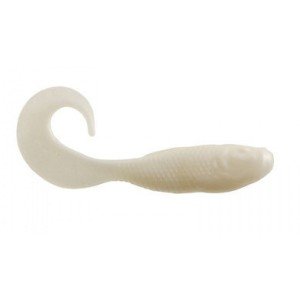



I will tie my first big bait flounder rig on sometime in mid to late June as the water temperature in the back bays of Ocean City starts to warm into the 70s and above. There are a lot of flounder behind Ocean City by this time in the summer and there are some nice fish to be had. The ratio of keeper sized fish to throwbacks starts to go up and we start to get reports of much larger flounder being caught, most of which are from deeper water. When I’m targeting larger fish, which is whenever I can, I use a sliding sinker on the main line above a barrel swivel again, but this time the rig only consists of 24” – 30” of 20# fluorocarbon and one Gamakatsu 02312 size 2/0 Octopus hook in red. This is a very simple rig that I use to fish big baits targeting big fish. I use this rig with live baits like bunker (alewife), spot, big minnows, sand perch and my all time favorite, mullet. I’ll also use this rig with large strips of squid, bluefish or sea robin if I can’t get ahold of any live bait. The sliding sinker allows for a short drop back while the flounder picks these baits up and turns them to swallow them head first. I fish my bait caster in free spool holding pressure with my thumb and immediately let it go when I feel a bite. I’ll give it three to five seconds, engage the spool, reel up any slack and pull back very lightly to check if there is any resistance. If I feel any weight, or the unmistakable “thump” of a flounder I set the hook hard, but smooth. A flounder’s mouth can be fragile, if you “jerk” or “yank” you’re going to miss some hook sets. If he’s there, he’s on, and if he’s not, drop it back down quick. Flounder are aggressive and he just might pick it back up.
Anglers can catch fish in all water depths in the summer months, but as the water temperatures rise into the upper 70s and sometimes low 80s most experienced flounder fishermen will move from fishing sand bars and shallow channel edges to fishing deeper holes and the bottom of navigation channels. The main channel that runs from the inlet right through the draw span of the route 50 bridge is a great spot to catch keeper flounder from June through October. The channel reaches depths of over 30 feet and there is plenty of structure to hold bait that attracts flounder, rockfish, bluefish, trout and other predatory fish that frequent Ocean City’s back bays. The abundance of fish attracts many anglers to the route 50 bridge both by land and by boat. Use common sense, be courteous and look out for fellow fishermen when this popular spot gets crowded.
Different times of the season call for different techniques and a variety of baits when you are fishing for flounder in Ocean City, Maryland, and if you take the time to use the right stuff you are going to have success. Of course the old saying, “even a blind squirrel finds a nut” applies here too. I was working on the party boat Tortuga in the early 90s and we had a woman catch a flounder over seven pounds on a single hook rig with about 14 pieces of eaten squid on it while experienced flounder fishermen right next to her using the right stuff caught zilch. That’s just fishing. However, if you put in the time, use the right rigs and bait and fish the right areas at the right time of year you’re going to catch flounder…..Right? Right! And I’ll give you one more piece of advice that I’ve learned over the years that will help you put a lot more flounder in the cooler. Don’t forget your landing net and when that 10 pound doormat gets to the surface, leave his head in the water.

